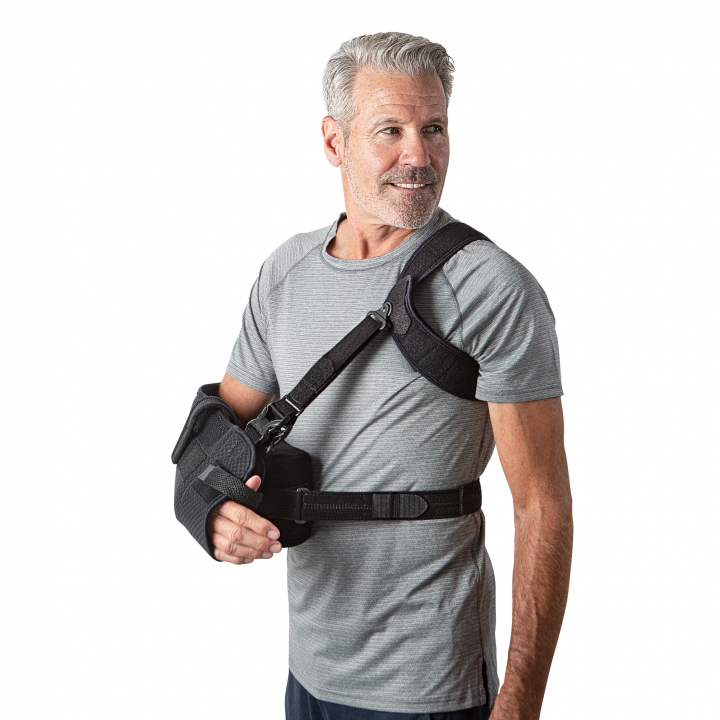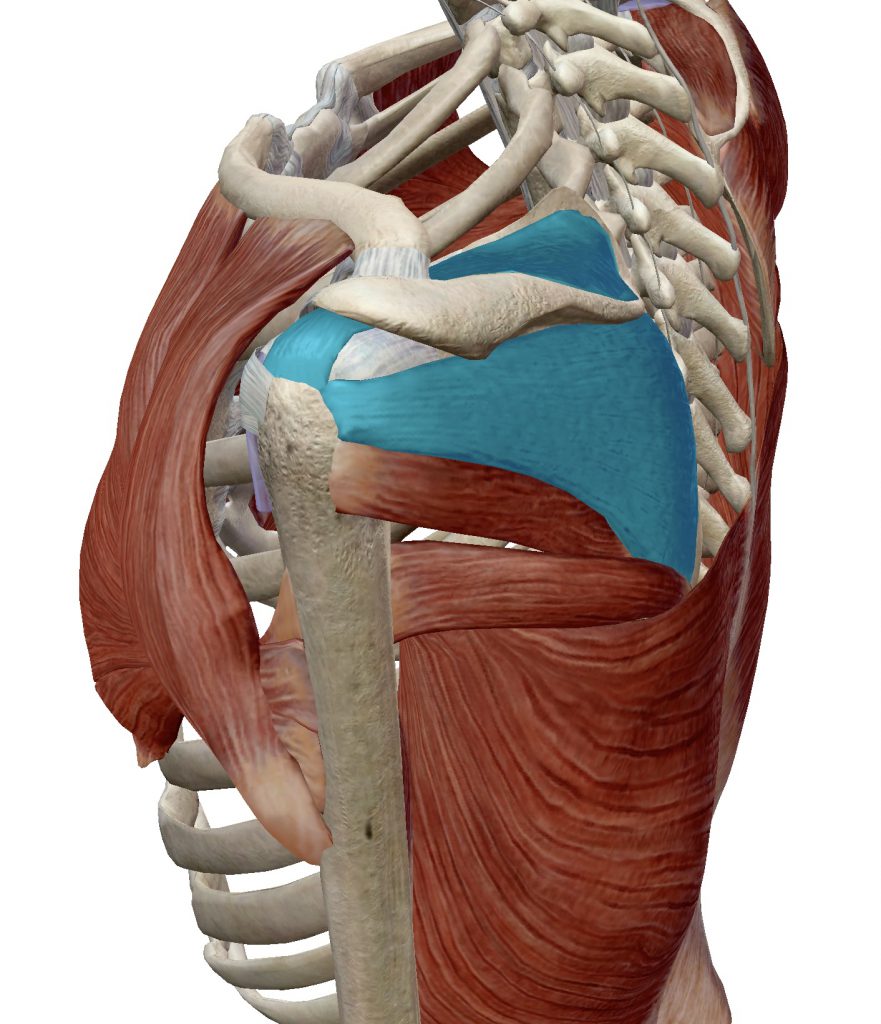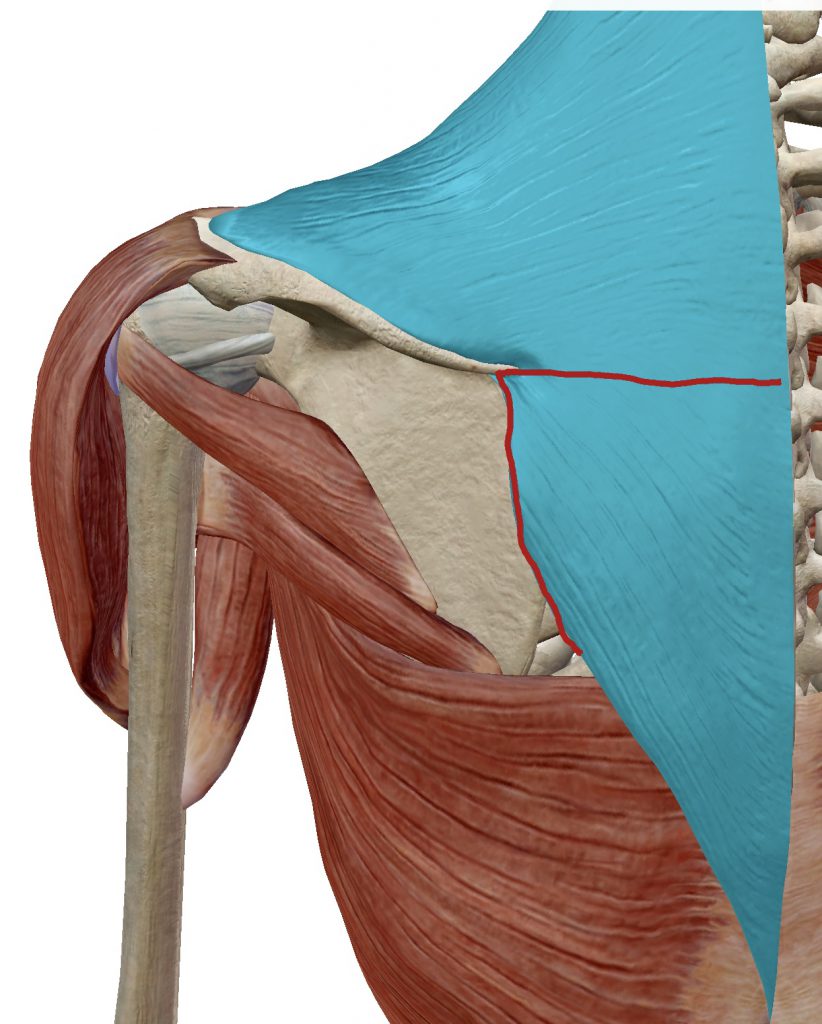Anatomy
The rotator cuff is comprised of the 4 muscles and tendons that surround the top of the upper arm bone (humerus) and hold it in the shoulder joint.
A tear may result suddenly from a single traumatic event or develop gradually. There is often a preceding history of some pain over the outside of the shoulder/arm particularly when doing activities such as putting on a jacket.
Most tears can be treated with physiotherapy or straightforward surgery. Occasionally it is not possible to surgical repair the tendon as the damage is too severe.
Typically these involve both the supraspinatus and infraspinatus tendons.
How is the diagnosis made?
The history of the symptoms will be taken and the shoulder examined. There are usually certain positions in which the shoulder feels more painful.
Usually an MRI scan is used to confirm these more severe tears.
Treatment options
If non surgical treatment has failed then a Lower Trapezius Tendon Transfer may be required.
Important information
Lower Trapezius Tendon Transfer is salvage surgery, used when there are almost no alternatives.
The shoulder will never be a “normal’ shoulder as 2 of the tendons which make it work have been replaced.
The long term outcomes are uncertain as the procedure is quite new however the 5 year results are good.
It takes some time to recover from shoulder surgery. A sling needs to be worn for 6 weeks after surgery and full function may not return for up to a year. A physiotherapy program of exercises to strengthen and restore motion will be started after surgery. Commitment to following the program will make a difference in the ultimate results. Although every case is unique, surgery can relieve pain for most people and rehabilitation can restore a functional (but often not full) range of motion.
A graft is used during the operation. This is an Achilles tendon from a dead donor. It will have been screened and treated. You need to be aware that it does come from a dead person and that there is a very small risk of infection being passed on.
Anaesthetic
General Anaesthetic with an interscalene block (Fully asleep with a local anaesthetic injection into the side of the neck will numb the nerves to the shoulder for post-operative pain relief)
Operation type
Arthroscopic (keyhole) and a 5cm incision behind the shoulder.
Procedure
The gleno-humeral (shoulder) joint will be inspected first.followed by the subacromial bursa and the rotator cuff.
A soft tissue shaving device will be used to clear any scar tissue away.
The incision will be made at the back of the shoulder and the Lower Trapezius Tendon will be freed up.
An Achilles tendon allograft will be connected to the top of the humerus where the rotator cuff was previously attached. This is done using keyhole surgery and is very similar to a rotator cuff repair. The graft is then attached to the lower trapezius tendon.
Animation of Lower Trapezius Tendon Transfer
Wound Closure
Dissolving stitches are used for the incision at the back. This does not need to be removed.
Small butterfly paper stitches will be used to close the wounds.
Tegaderm waterproof dressings will be placed over the top of the paper stitches.
Pain relief
The anaesthetist will discuss a nerve block which will be administered after you are asleep, this means that you will wake up with no pain in the shoulder but the arm will feel numb for up to 12 hours. You will be prescribed painkillers to start taking when you get home and we encourage you to take these regularly for at least the first few days. There will be some discomfort but this settles quite rapidly and ice packs can be used in addition if you wish.
Wound care
The dressings will be changed before you go home and these can be left alone until they are removed. Typically they can be removed 10 days after surgery just by peeling them off and you do not need to visit the doctor for this.
The dressings are showerproof and you will be given some spares in case they start to peel off.
Rehabilitation after surgery
You will wake up with a sling on your arm. It is ESSENTIAL that you wear this as instructed

Instructions on how to fit the Ultrasling PRO
Surgical Risks
Every operation has a degree of risk. It is important that you are aware of these risks before you agree to proceed with your operation.
If you decide not to proceed with surgery there is a possibility that the symptoms will settle on their own but they may continue and they may get worse. You will not damage the shoulder if you decide not to proceed with surgery.
The most common or significant risks are outlined below. A risk of 0.1% means that 1 in 1000 people will suffer the complication
- Failure of the procedure to relieve symptoms: 5%
- Superficial Infection (requiring antibiotics): 0.16%
- Deep Infection (requiring further surgery): 0.02%
- PE (Pulmonary Embolus) (Blood clot in the lung): 0.13% – Blood thinning medication is required for several months. Can rarely result in death.
- DVT (Deep Vein Thrombosis) (Blood clot in the leg): 0.14% – Blood thinning medication is required for several months. Can lead to PE
- Nerve Injury: 0.01% – Usually temporary. Can cause weakness around the shoulder with loss of function and rarely can be permanent.
- Heart attack: 0.02%
- To put these numbers in perspective
The chance of:- Getting three balls in the UK national lottery: 0.9%
- Needing emergency treatment in the next year after being injured by a can, bottle, or jar: 0.1%
- Death by an accident at home: 0.01%
- For a 50 year old man in good health the 5 year risk of dying is 0.8%
Frequently asked questions
Return to work after surgery
This is very much dependent on the type of work that you do, whether you need to drive to get to work and the type of surgery that you have had done.
You, as the patient, have the best idea of the specific demands that are required of you to do your work safely and effectively.
Having an operation with an anaesthetic often takes more out of people than they would expect. Generally it is probably worth taking at least a week off from your regular work after having had any procedure.
You should discuss expected post-operative recovery and work with the surgeon before your operation.
Driving after surgery
To be able to drive safely you should be capable of actively moving your shoulder without assistance and without damaging the surgical repair. You should be able to react normally to avoid causing injury to yourself or others due to a lack of control.
Typically this is a MINIMUM eight weeks after surgery.
It is a UK requirement that, unless specific dispensation has been granted by the DVLA, a driver uses both arms to control the steering wheel.
It is the responsibility of the driver to ensure that they are in control of the vehicle at all times. They should be able to demonstrate this if stopped by the police.
It is not a requirement to notify the DVLA unless the medical conditions likely to affect safe driving persist for longer than three months after the date of the surgery.
Drivers must not drive under the influence of narcotic medications or within a minimum of 24 hours after an anaesthetic.
You are not allowed to drive one-handed and therefore cannot drive whilst you are in the sling.
There is no precise time after surgery when you can return to driving, it varies from person to person. However, the recommended amount of time that your arm should be in a sling following surgery is the MINIMUM time before considering a return to driving.
You can return to driving when you are capable of moving your shoulder without assistance and are capable of driving safely and reacting appropriately in an emergency situation.
Although it is not essential, it may be wise to discuss your return to driving with your car insurance company.
Sports after surgery
You can start simple cardio such as walking or using a static bicycle immediately following surgery as long as you are wearing your sling. Exercises which involve the shoulder cannot start until you have regained reasonable range. This is typically about eight weeks following surgery.
Lower Trapezius Tendon Transfer is salvage surgery and the shoulder will not be normal.
Contact sports, repetitive overhead sports (such as tennis) and sports in which you are likely to fall over should be avoided.

